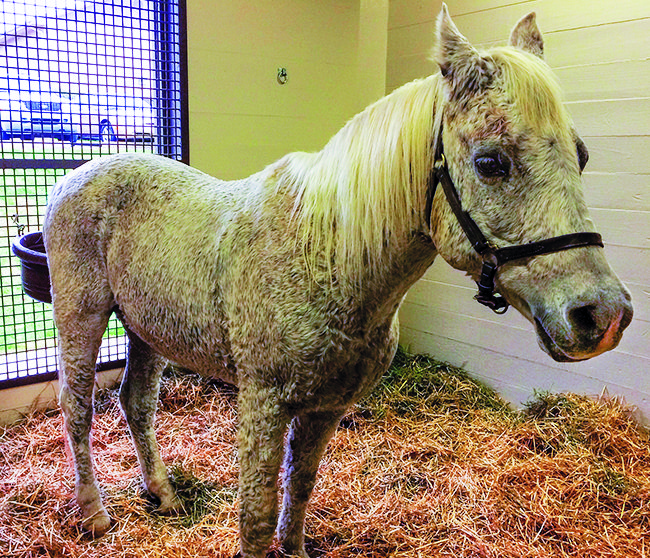Cushing’s disease, or pituitary pars intermedia dysfunction (PPID), occurs primarily in older horses — those in their mid to late teens and early 20s — but the disease has been documented in horses as young as 10 years old. Approximately one in seven horses will be diagnosed with PPID, so a working knowledge of signs indicative of the disease is useful for your clients.
Signs of PPID include:
Unusual hair coat. Horses with PPID will have changes in their coats, although these variations do not follow a prescribed pattern. Some horses might have delayed shedding of their winter coat or fail to shed a winter coat entirely, while others may grow an unusually dense, patchy, wavy or curly coat.
Hoof problems. A history of recurring laminitis might be suggestive of PPID. Many horses diagnosed and treated for laminitis have underlying PPID, although it is often not investigated or recognized, given the immediate need to take care of the hoof and lameness issues. Sore feet, including persistent abscesses, have been documented in affected horses.
Abnormal fat deposition. Horses diagnosed with PPID typically have patchy fat accumulation on the neck, near the base of the tail and occasionally on other parts of the body including around the eyes. As fat gathers in atypical places, muscle tone might decrease.
Lethargy. Many horses with PPID have a change in energy levels and this can range from slight to marked depending on the individual. Motivation might also change due to concomitant problems such as overheating and excessive sweating due to a shaggy coat or unsoundness due to persistent hoof problems.
Change in water consumption. Horses with PPID often drink more than usual and this will be readily apparent to those horse owners who keep an eye on consumption. For horses that have access to a large water tank, especially if it is shared among a group of horses, this sign might be difficult to recognize. Urine output increases as water intake increases, so the stalls of PPID-affected horses are often wetter and more malodorous.
Early diagnosis of PPID will give the horse the best chance to live a long and symptom-free life. Although no cure for the disease has been identified, there are ways to slow the progression of the signs and these can be realized by working with a veterinarian and a nutritionist.







